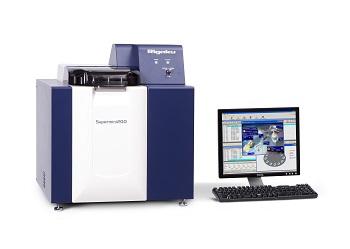Rigaku Corporation today announced the publication of a new X-ray fluorescence (XRF) spectrometry technique for the analysis of whole coal by the pressed powder method. The report includes complete information about sample preparation, method calibration and measurement.

Rigaku Application Note XRF 1060 details a rapid elemental determination method for whole coal analysis and demonstrates the performance of the Rigaku Supermini200 analyzer, a benchtop wavelength-dispersive (WD) XRF spectrometer. The method also makes use of an advanced correction method for powder samples that covers many of the lighter elements in coal, as well as heavy elements.
Coal is the most abundant source of energy among fossil fuels in the world. It is primarily used as a solid fuel, producing electricity and heat through combustion. Coal beneficiation is critical since it determines the quality of the final product. XRF spectrometry with the pressed powder method is a simple analysis technique that can help ensure that components harmful to the environment, such as ash and sulfur, are sufficiently low. This non-destructive analytical technique is also able to determine the concentration of elements that can be lost during the ashing process. It is able to evaluate materials with wide elemental coverage and concentration ranges, and varied samples matrices, and is therefore well suited for industrial process and quality control.
The analysis was carried out using the Supermini200 analyzer, a unique benchtop sequential WDXRF spectrometer with high spectral resolution and high sensitivity for light elements. The spectrometer is designed to minimize installation requirements, such as cooling water, special power supply and installation space.
Functionally versatile software allows easy setup of various types of applications. The semi-quantitative analysis program “SQX” allows quick elemental determination of unknown samples without the need for reference materials. ”Quant Scatter FP” is a unique function integrated into the Rigaku Fundamental Parameter (FP) software that enables correction for matrix effects, even for ore samples with high heavy element content.
Chlorine is an undesirable element in coal because it can seriously damage production facilities during the high-temperature manufacturing process. The Supermini200 spectrometer, which is equipped with a Pd target X-ray tube, has an advantage over Rh target X-ray tubes for the trace detection of chlorine, allowing such analysis with high sensitivity since no primary filter is required.
The results show that the Supermini200 analyzer is able to quantify elements significant in coal mining. Trace elements, as well as ash components, can be analyzed with high precision. The pressed powder method with Rigaku advanced correction technology is widely applicable for elemental analysis in exploration, mining operation, beneficiation and final product assays.
A copy of this report may be requested at http://www.rigaku.com/en/products/xrf/supermini/apps/1060.